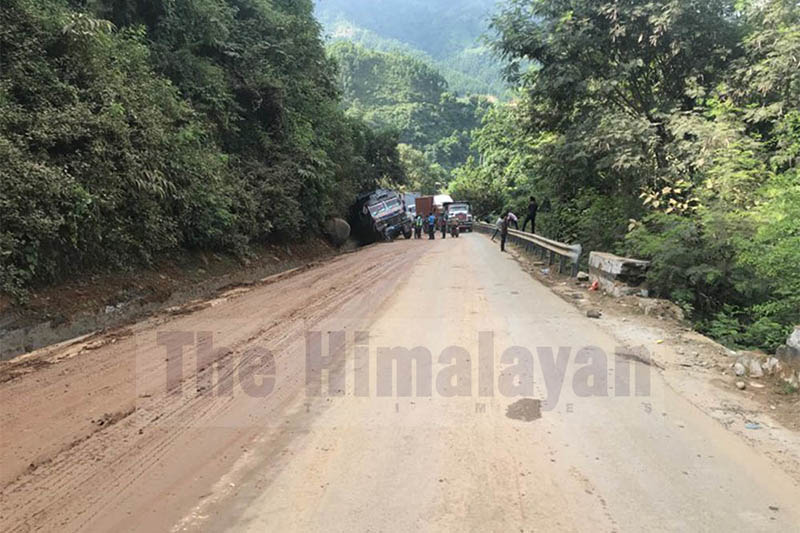Mapping of road accident black spots ordered
- On an average 2,000 people are killed in road accidents in a year
Kathmandu, December 20
The Disaster Risk Reduction and Management Executive Committee has tasked the Ministry of Physical Infrastructure and Transport and Nepal Police with the responsibility of forming a survey team to carry out mapping of road accident black spots along the highways.
In the wake of a bus plunge that claimed at least 14 lives in Dolakha district on December 15, Prime Minister KP Sharma Oli had directed the authorities concerned to come up with a concrete action plan to reduce road accidents across the country. Road accident stands as a major killer in Nepal. On an average, 2,000 people are killed and thousands injured in road accidents every year.
According to Under-secretary Shambu Prasad Regmi at the Ministry of Home Affairs, a recent meeting of DRRMEC held in Singha Durbar had decided to ask the MoPIT and Nepal Police to identify the road sections more vulnerable to accidents triggered by fog, mist and snowfall, and erect traffic signs on the roadside for providing necessary information to road users, especially drivers, about the precautionary measures to be adopted to avoid crash.
For this, the MoPIT and Nepal Police will conduct a comprehensive survey to identify the black spots on the highways. The Ministry of Finance and concerned provincial governments and local levels have been told to cooperate with the MoPIT and Nepal Police in their efforts to tackling road accidents.
Nepal Police said adverse weather condition was one of the reasons of increasing road accidents during the winter season in Nepal.
Accidents occurred due to fog and mist reducing visibility at blind corners along the roads. Though natural condition cannot be avoided, necessary safety measures help to prevent road accidents. A report of Nepal Police showed that other key factors for road accident included driver’s negligence, overspeeding, drink driving, recklessness of passengers, inadequate safety barriers, random roadside parking, dilapidated roads, lack of awareness of traffic rules and poor road engineering.
The MoHA has written to the Ministry of Federal Affairs and General Administration to put all local levels on standby to prevent the loss of lives due to cold waves in the winter.
The country faces cold waves which could cause death and injury to livestock and wildlife and people, mainly the elderly and children. Many parts of the Tarai remain covered in thick blanket of fog blocking sunlight for days during the peak of the winter.
In response to the letter from the MoHA, the MoFAGA yesterday issued a circular to local levels, directing them to raise awareness about risk of hypothermia and ways of protecting oneself from cold. The circular has also directed local authorities to distribute warm blankets to needy people, arrange bonfires, coordinate with the district disaster management committees and work in association with security agencies, district public health offices and hospitals to minimise the impact of cold weather.






